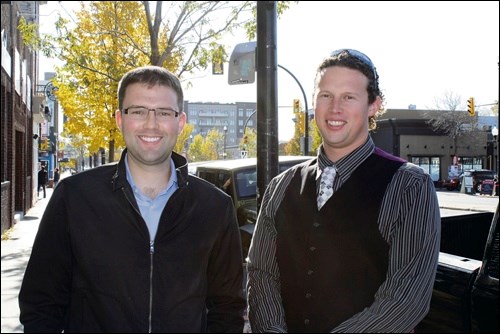Eric Veikle was just nine years old when he had his first major heart incident. He was running outside during gym class at Cut Knife Elementary School when he collapsed. Eric doesn't remember what happened next but believes his friend, who was running beside him, rushed to the gym teacher, who found Eric not breathing and without a pulse.
His teacher performed CPR until the ambulance arrived. The medics continued CPR as Eric was transported to Saskatoon. Eric had to stay in the intensive care unit at Royal University Hospital for a few days.
Shortly after that, he and his parents went to Toronto to see specialists, leaving behind his only sibling, 11-year-old brother Jason.
Tears sting Jason's eyes as he remembers watching what his younger brother was going through. "It was tough to see."
The Royal University Hospital Foundation (RUHF) is working to ensure brothers like Jason and Eric don't have to be separated if one of them needs lifesaving treatment. Its Every Heart Matters campaign is working toward raising $5.5 million for a dedicated laboratory and program at Royal University Hospital for cardiac electrophysiology (EP), an advanced sub-specialty of cardiac care. Right now, Saskatchewan is one of only two provinces in the country that doesn't offer this standard of care on a full-time basis.
Having such a program would bring a great deal of comfort to people like Eric, their family, friends and many others. Heart rhythm disorders affect one in four Canadians and can lead to cardiac arrest, the leading cause of death in Canada. About 1,200 people die from cardiac arrest every year in Saskatchewan.
While Eric was in Toronto, he had surgery that removed muscle, which was restricting blood flow, from around his aorta. Eric lives with hypertrophic cardiomyopathy, a condition where heart muscle becomes abnormally thick. He was fitted with an implantable cardioverter defibrillator (ICD), which at that time were pads sewn onto the outside of his heart under his rib cage - a much larger device than what is used today.
"The only limitation I had after that was exerting myself," remembers Eric, who says he was bitter about his condition and always tried to push his limits when it came to sports like track and field.
The ICD "shocks" Eric's heart when it stops. In other words, without it, he would die.
ICDs must be replaced every five to seven years; however, until the Every Heart Matters campaign raises the funds for a dedicated EP lab at RUH, any Saskatchewan resident needing one will likely have to go out of province for the treatment, leaving behind loved ones and familiar cardiologists.
Eric's life has been saved twice since the ICD was implanted. Once was in high school while he was again running outside. "I started to feel dizzy and light-headed." Eric slowly made his way back to the gym where he passed out. The ICD shocked his heart. Eric says it was scary but he was up and "going again" shortly afterward.
Another near miss was six or seven years ago when he was helping out on the farm, running to get the grain truck.
"I knew it was coming on again, I began feeling faint," recalls Eric. "I woke up with a bunch of gravel in my mouth, not knowing where I was. Eventually I pieced it together."
There was even talk of Eric having to miss his high school grad. The leads attached to the pads on the ICD were broken, which was only discovered by chance. The doctors discovered this because they called Eric in for a checkup after someone with his condition in Ontario died. That person's ICD had malfunctioned due to the leads becoming unattached.
Against his doctor's advice, Eric went to his graduation anyway. Looking back now, he says it probably wasn't the wisest decision. "I probably made life more difficult for people around me than I really should have."
Eric says it would have been nice to have been treated at home rather than in Toronto or Calgary, but is grateful the facilities and specialists were available in Canada at all.
"What I think is the greatest benefit to having the facilities in Saskatchewan is developing experts in the field so who knows what they'll be able to do in the future."
The RUHF and Saskatoon Health Region have identified a full-time EP lab as a priority. There are even two cardiologists at RUH trained in this specialized area - they just don't have the facilities or equipment to offer their services on a full-time basis.
A full-time, fully equipped operating facility and management program for heart rhythm disorders would give new hope to those like Eric who suffer from the disease, as well as their worried family members.
"If I'd been born three generations ago, I'm pretty sure I wouldn't be here today," says Eric.
Your donation to the Every Heart Matters Campaign will change how others, like Eric, live their life. Visit www.ruhf.org to donate online or call 306-655-1984.



